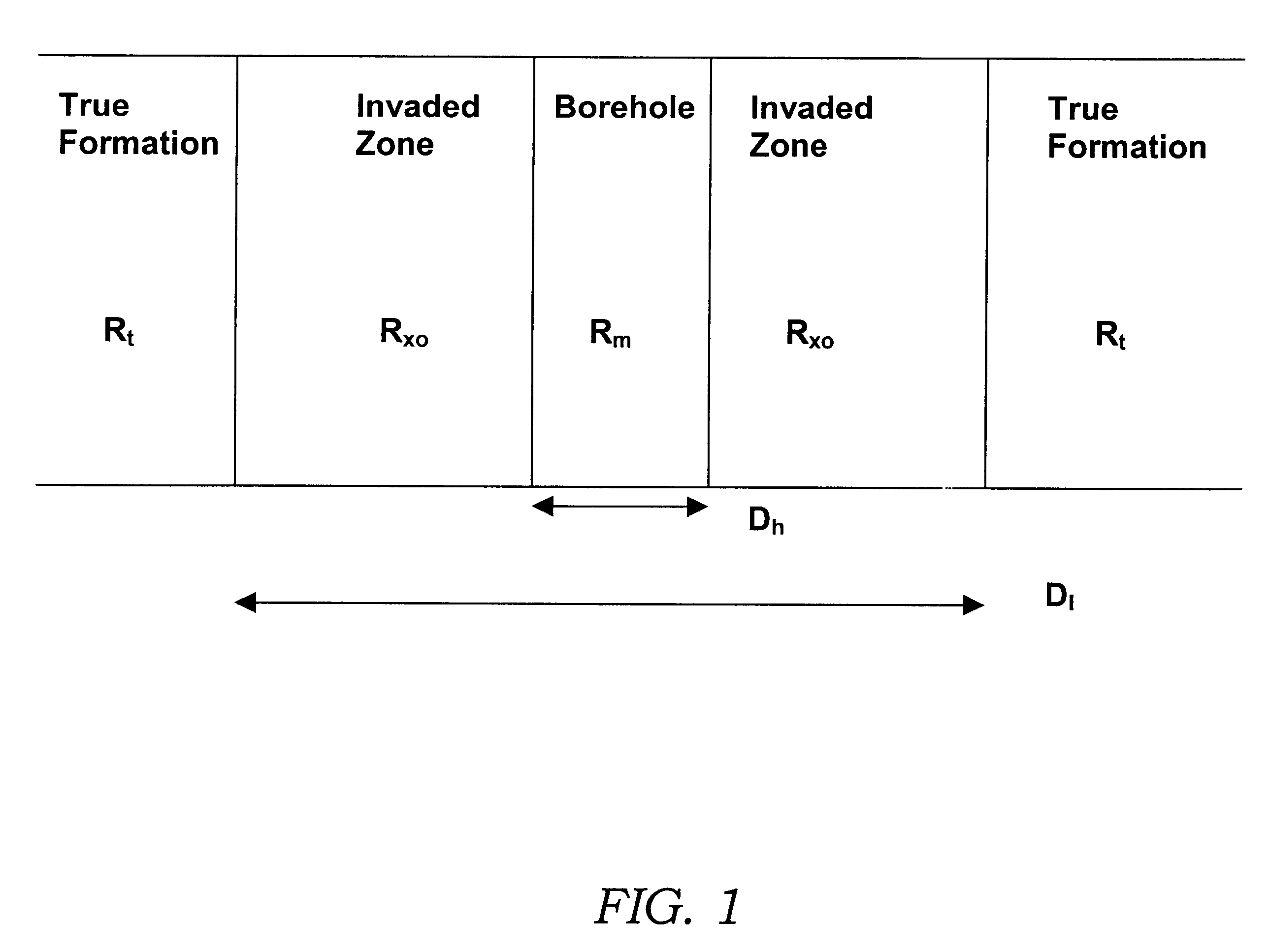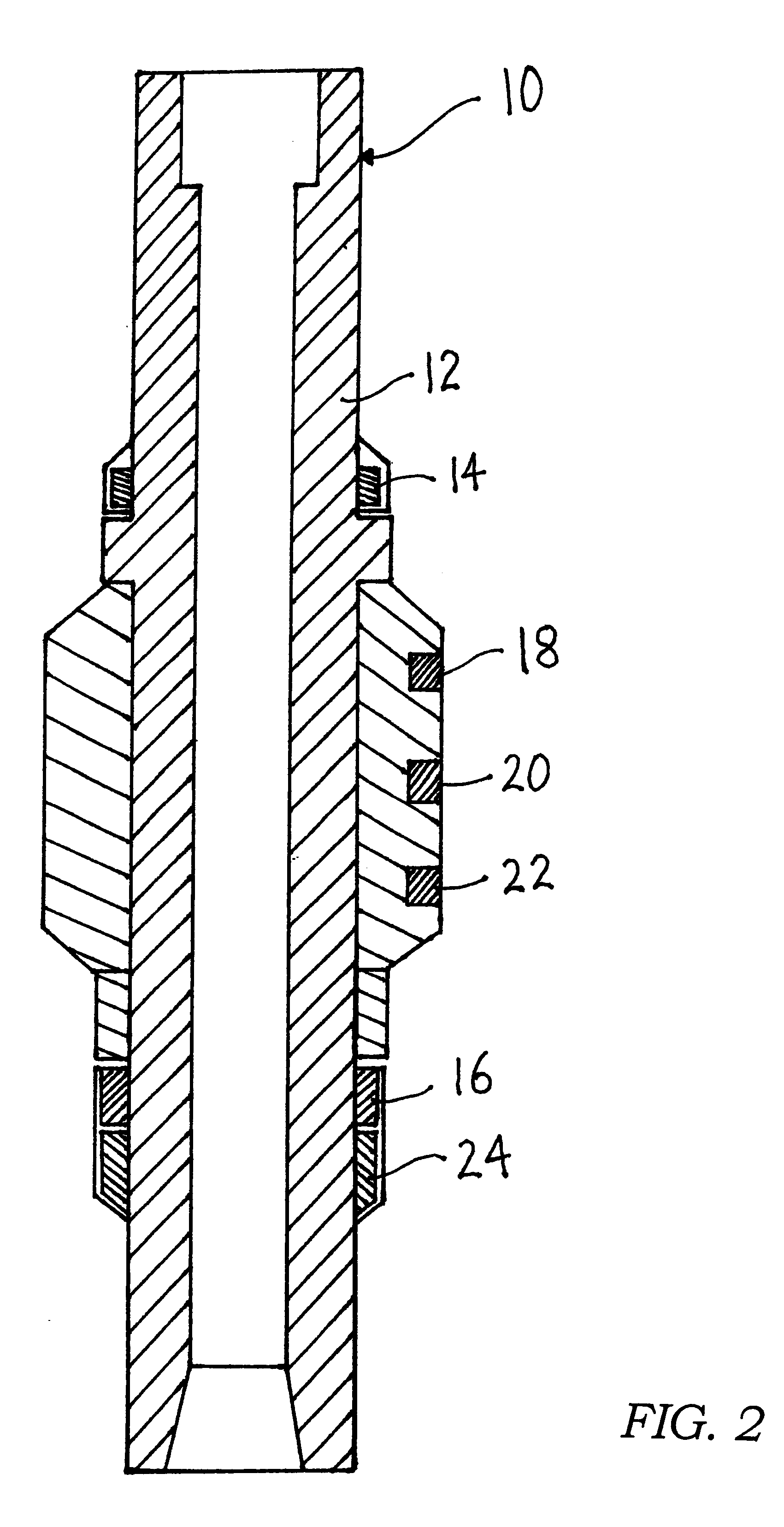Methods and system for characterizing the response of subsurface measurements to determine wellbore and formation characteristics
a technology of electromagnetic and subsurface measurement, applied in seismology for waterlogging, using reradiation, instruments, etc., can solve problems such as lack of reliable fullbore caliper measurement, process often employed to measure subsurface characteristics subject to significant errors, and inability to use wireline caliper measurements
- Summary
- Abstract
- Description
- Claims
- Application Information
AI Technical Summary
Problems solved by technology
Method used
Image
Examples
Embodiment Construction
FIG. 1 illustrates the environment encountered during subsurface measurement with conventional well tools. For simplicity, an idealized step invasion profile is assumed. The relevant parameters of the formation model consist of two geometrical parameters, the borehole diameter D.sub.h, the invasion diameter D.sub.i, and three resistivity parameters, mud resistivity R.sub.m, invasion resistivity R.sub.xo, and formation resistivity R.sub.t. For focused measurements, it is clear that measurement current has to go through the borehole and invaded zone before entering the undisturbed formation. Thus, the resistivity measurement will be affected by the electrical properties of all these zones.
An embodiment of the invention utilizes multi-sensor azimuthal electric measurements to calculate caliper in different sectors of azimuthal directions and, at the same time, determine the properties of the true rock formation surrounding the borehole. An LWD instrument particularly suited for use wit...
PUM
 Login to View More
Login to View More Abstract
Description
Claims
Application Information
 Login to View More
Login to View More - R&D
- Intellectual Property
- Life Sciences
- Materials
- Tech Scout
- Unparalleled Data Quality
- Higher Quality Content
- 60% Fewer Hallucinations
Browse by: Latest US Patents, China's latest patents, Technical Efficacy Thesaurus, Application Domain, Technology Topic, Popular Technical Reports.
© 2025 PatSnap. All rights reserved.Legal|Privacy policy|Modern Slavery Act Transparency Statement|Sitemap|About US| Contact US: help@patsnap.com



